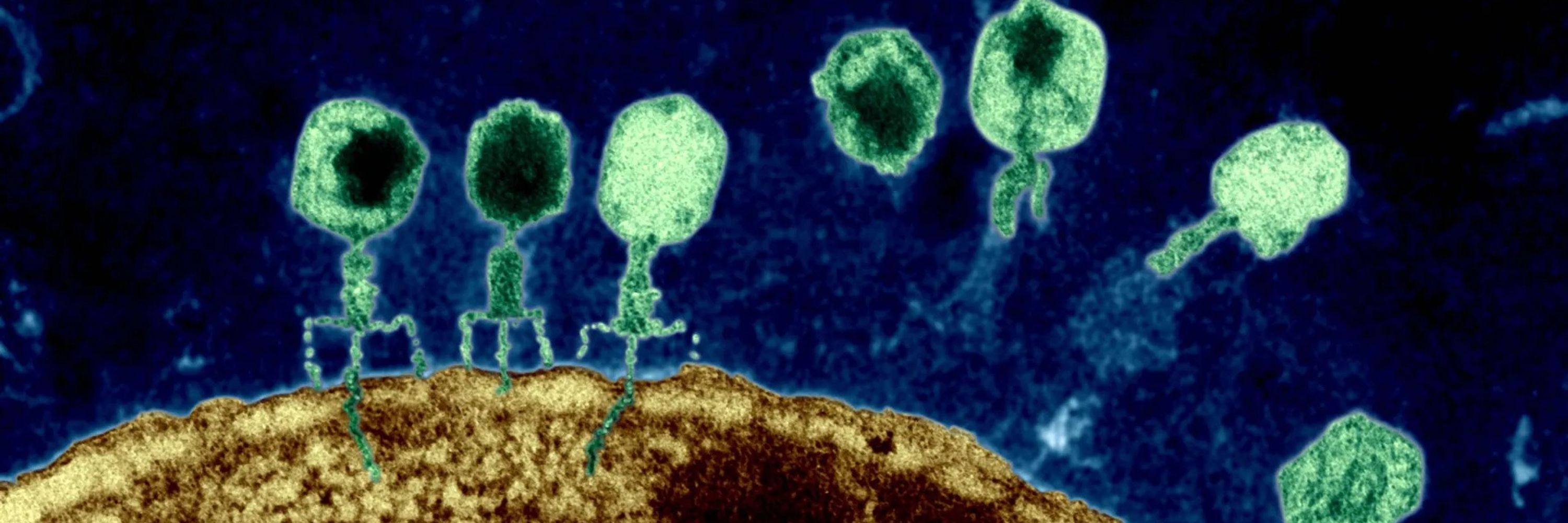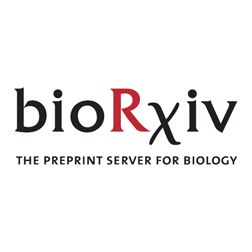
Osterman Ilya
@ostermanilya.bsky.social
Senior Research Associate, microbiologist, biochemist, The Sorek lab, Weizmann Institute of Science
Pinned

Bacteria can sense when a virus starts shredding their genome — by detecting methylated mononucleotides.
Here’s the story of how we discovered the Metis defense system 👇
www.biorxiv.org/content/10.1...
Here’s the story of how we discovered the Metis defense system 👇
www.biorxiv.org/content/10.1...
Reposted by Osterman Ilya
Happy to see our HT-PELSA paper now published in @natsmb.nature.com 🎊 Big thanks for the constructive review process! 📖Read the manuscript here (www.nature.com/articles/s41...) & check the thread for additional information ⬇️
November 5, 2025 at 10:15 AM
Happy to see our HT-PELSA paper now published in @natsmb.nature.com 🎊 Big thanks for the constructive review process! 📖Read the manuscript here (www.nature.com/articles/s41...) & check the thread for additional information ⬇️
Reposted by Osterman Ilya
HT-PELSA, a new proteomics tool by EMBL researchers, processes samples 100x faster and works directly with complex crude cell, tissue, and bacterial lysates – developments which could accelerate drug discovery and basic biological research 💊
🔗 www.embl.org/news/science...
🔗 www.embl.org/news/science...

November 5, 2025 at 10:09 AM
HT-PELSA, a new proteomics tool by EMBL researchers, processes samples 100x faster and works directly with complex crude cell, tissue, and bacterial lysates – developments which could accelerate drug discovery and basic biological research 💊
🔗 www.embl.org/news/science...
🔗 www.embl.org/news/science...
Bacteria can sense when a virus starts shredding their genome — by detecting methylated mononucleotides.
Here’s the story of how we discovered the Metis defense system 👇
www.biorxiv.org/content/10.1...
Here’s the story of how we discovered the Metis defense system 👇
www.biorxiv.org/content/10.1...

November 6, 2025 at 5:00 AM
Bacteria can sense when a virus starts shredding their genome — by detecting methylated mononucleotides.
Here’s the story of how we discovered the Metis defense system 👇
www.biorxiv.org/content/10.1...
Here’s the story of how we discovered the Metis defense system 👇
www.biorxiv.org/content/10.1...
Reposted by Osterman Ilya
#PHGE BiomX Announces Positive FDA Feedback Supporting Next-Generation Phage Cocktail Program for Diabetic Foot Infections
https://www.stocktitan.net/news/PHGE/biom-x-announces-positive-fda-feedback-supporting-next-generation-1uqllk16fw5n.html
https://www.stocktitan.net/news/PHGE/biom-x-announces-positive-fda-feedback-supporting-next-generation-1uqllk16fw5n.html

BiomX Announces Positive FDA Feedback Supporting Next-Generation Phage Cocktail Program for Diabetic Foot Infections
BiomX Inc. (NYSE American: PHGE) (“BiomX” or the
www.stocktitan.net
November 4, 2025 at 1:40 PM
#PHGE BiomX Announces Positive FDA Feedback Supporting Next-Generation Phage Cocktail Program for Diabetic Foot Infections
https://www.stocktitan.net/news/PHGE/biom-x-announces-positive-fda-feedback-supporting-next-generation-1uqllk16fw5n.html
https://www.stocktitan.net/news/PHGE/biom-x-announces-positive-fda-feedback-supporting-next-generation-1uqllk16fw5n.html
Reposted by Osterman Ilya
Phage biology: Stuck with dU www.sciencedirect.com/science/arti...

November 4, 2025 at 2:38 PM
Phage biology: Stuck with dU www.sciencedirect.com/science/arti...
Reposted by Osterman Ilya
A membrane-bound nuclease directly cleaves phage DNA during genome injection https://www.biorxiv.org/content/10.1101/2025.11.03.685801v1
November 3, 2025 at 4:16 PM
A membrane-bound nuclease directly cleaves phage DNA during genome injection https://www.biorxiv.org/content/10.1101/2025.11.03.685801v1
Reposted by Osterman Ilya
#microsky #phagesky #phage defence
Novel bacterial ubiquitination-like pathway!
www.nature.com/articles/s41...
Novel bacterial ubiquitination-like pathway!
www.nature.com/articles/s41...

Mechanistic basis for protein conjugation in a diverged bacterial ubiquitination pathway - Nature Structural & Molecular Biology
Ye et al. define the structure and mechanisms of a bacterial pathway that performs ubiquitination-like protein conjugation, revealing new insights into the evolution and biological roles of ubiquitina...
www.nature.com
November 3, 2025 at 8:56 PM
#microsky #phagesky #phage defence
Novel bacterial ubiquitination-like pathway!
www.nature.com/articles/s41...
Novel bacterial ubiquitination-like pathway!
www.nature.com/articles/s41...
Reposted by Osterman Ilya
Excited to share: DNA glycosylases are diverse antiviral effectors. They recognize phage base modifications and initiate genome destruction. A structure‑guided approach made the scope of this discovery possible! 🧪 #phagesky doi.org/10.1101/2025... #phage #microbiology

Antiviral Defence is a Conserved Function of Diverse DNA Glycosylases
Bacteria are frequently attacked by viruses, known as phages, and rely on diverse defence systems like restriction endonucleases and CRISPR-Cas to survive. While phages can evade these defences by cov...
doi.org
October 30, 2025 at 12:16 PM
Excited to share: DNA glycosylases are diverse antiviral effectors. They recognize phage base modifications and initiate genome destruction. A structure‑guided approach made the scope of this discovery possible! 🧪 #phagesky doi.org/10.1101/2025... #phage #microbiology
Reposted by Osterman Ilya
Are you interested in studying RNA phages? We are looking for a PhD student and a postdoc to join the lab!
For more information and how to apply, see below 👇
Please RT!
For more information and how to apply, see below 👇
Please RT!
📢 The #HIRI is looking for a #postdoc & a #PhD student to join the research group of @jenshoer.bsky.social. His lab focuses on understanding the molecular mechanisms of #phages with #RNA genomes during infection, host takeover & anti-phage defense. 🧫🦠 More info: www.helmholtz-hiri.de/en/jobs-tale...

Working at HIRI
At the HIRI, we do not just value excellent research. Short distances, an open door policy, and a good working atmosphere—this is what distinguishes us from others. Have a look at our current job…
www.helmholtz-hiri.de
October 17, 2025 at 12:52 PM
Are you interested in studying RNA phages? We are looking for a PhD student and a postdoc to join the lab!
For more information and how to apply, see below 👇
Please RT!
For more information and how to apply, see below 👇
Please RT!
Reposted by Osterman Ilya
Use antisense oligomers to silence phage genes and discover new biology.
@jorg-vogel-lab.bsky.social @helmholtz-hiri.bsky.social @helmholtzhzi.bsky.social @uni-wuerzburg.de
print: www.nature.com/articles/s41...
highlight: www.nature.com/articles/s41...
briefing: www.nature.com/articles/d41...
@jorg-vogel-lab.bsky.social @helmholtz-hiri.bsky.social @helmholtzhzi.bsky.social @uni-wuerzburg.de
print: www.nature.com/articles/s41...
highlight: www.nature.com/articles/s41...
briefing: www.nature.com/articles/d41...

October 31, 2025 at 8:08 AM
Use antisense oligomers to silence phage genes and discover new biology.
@jorg-vogel-lab.bsky.social @helmholtz-hiri.bsky.social @helmholtzhzi.bsky.social @uni-wuerzburg.de
print: www.nature.com/articles/s41...
highlight: www.nature.com/articles/s41...
briefing: www.nature.com/articles/d41...
@jorg-vogel-lab.bsky.social @helmholtz-hiri.bsky.social @helmholtzhzi.bsky.social @uni-wuerzburg.de
print: www.nature.com/articles/s41...
highlight: www.nature.com/articles/s41...
briefing: www.nature.com/articles/d41...
Reposted by Osterman Ilya

q.e.d Science
Critical Thinking AI for constructive criticism and science evaluation
qedscience.com
October 15, 2025 at 12:22 PM
Reposted by Osterman Ilya
Reposted by Osterman Ilya
Serine recombinases are conserved genetic markers of antiphage defense systems https://www.biorxiv.org/content/10.1101/2025.10.07.681051v1
October 8, 2025 at 3:16 PM
Serine recombinases are conserved genetic markers of antiphage defense systems https://www.biorxiv.org/content/10.1101/2025.10.07.681051v1
Reposted by Osterman Ilya
#WeekendRead! #ToSenseOrNotToSense! #MysterySolved! Berouti, Wagner, Carell, @v-hornung.bsky.social &co show @cp-cell.bsky.social that RNase T2 & PLDs generate #TLR7 & #TLR8 agonistic ligands only if RNA does not contains pseudouridines explaining avoidance of self RNA sensing!

Pseudouridine RNA avoids immune detection through impaired endolysosomal processing and TLR engagement
Recognition of exogenous RNA by Toll-like receptors (TLRs) is central to pathogen defense. Using two distinct binding pockets, TLR7 and TLR8 recognize…
www.sciencedirect.com
October 19, 2025 at 3:03 PM
#WeekendRead! #ToSenseOrNotToSense! #MysterySolved! Berouti, Wagner, Carell, @v-hornung.bsky.social &co show @cp-cell.bsky.social that RNase T2 & PLDs generate #TLR7 & #TLR8 agonistic ligands only if RNA does not contains pseudouridines explaining avoidance of self RNA sensing!
Reposted by Osterman Ilya
1/10 Genome maintenance by telomerase is a fundamental process in nearly all eukaryotes. But where does it come from?
Today, we report the discovery of telomerase homologs in a family of antiviral RTs, revealing an unexpected evolutionary origin in bacteria.
www.biorxiv.org/content/10.1...
Today, we report the discovery of telomerase homologs in a family of antiviral RTs, revealing an unexpected evolutionary origin in bacteria.
www.biorxiv.org/content/10.1...

Antiviral reverse transcriptases reveal the evolutionary origin of telomerase
Defense-associated reverse transcriptases (DRTs) employ diverse and distinctive mechanisms of cDNA synthesis to protect bacteria against viral infection. However, much of DRT family diversity remains ...
www.biorxiv.org
October 17, 2025 at 5:22 PM
1/10 Genome maintenance by telomerase is a fundamental process in nearly all eukaryotes. But where does it come from?
Today, we report the discovery of telomerase homologs in a family of antiviral RTs, revealing an unexpected evolutionary origin in bacteria.
www.biorxiv.org/content/10.1...
Today, we report the discovery of telomerase homologs in a family of antiviral RTs, revealing an unexpected evolutionary origin in bacteria.
www.biorxiv.org/content/10.1...
Reposted by Osterman Ilya
Perfect timing in the field for a beautiful review on NAD+ in bacterial immunity by @hugovaysset.bsky.social and @audeber.bsky.social @cp-molcell.bsky.social
#MicroSky
www.cell.com/molecular-ce...
#MicroSky
www.cell.com/molecular-ce...

October 16, 2025 at 2:58 PM
Perfect timing in the field for a beautiful review on NAD+ in bacterial immunity by @hugovaysset.bsky.social and @audeber.bsky.social @cp-molcell.bsky.social
#MicroSky
www.cell.com/molecular-ce...
#MicroSky
www.cell.com/molecular-ce...
Reposted by Osterman Ilya
Reposted by Osterman Ilya
Our story describing the Panoptes bacterial immune defense system is now finally peer-reviewed and published today! www.nature.com/articles/s41...

The Panoptes system uses decoy cyclic nucleotides to defend against phage - Nature
The Panoptes antiphage system defends bacteria by detecting phage-encoded counter-defences that sequester cyclic nucleotide signals, triggering membrane disruption and highlighting a broader strategy of sensing immune evasion through second-messenger surveillance.
www.nature.com
October 1, 2025 at 4:05 PM
Our story describing the Panoptes bacterial immune defense system is now finally peer-reviewed and published today! www.nature.com/articles/s41...
Reposted by Osterman Ilya
Discovery of phage defense systems through component modularity networks | bioRxiv https://www.biorxiv.org/content/10.1101/2025.09.30.679545v1

Discovery of phage defense systems through component modularity networks
Phage defense systems in bacteria exhibit high degrees of modularity, with sensing, signal transmission, and effector enzymes frequently being exchanged among phage defense gene clusters. In this study, we capitalized on this modularity to discover phage defense systems by searching for defense-associated modules in new gene contexts. This approach revealed a large and interconnected network of modular components distributed across diverse gene clusters. From over 500 candidate defense systems, we selected nine for experimental testing and validated three: Dionysus, a TerB-encoding system that disrupts early phage infection vesicle formation by Jumbo phages; Ophion, a Radical SAM-containing system that prevents the formation of the Jumbo phage nucleus; and Ambrosia, a tightly regulated RM-like system. Collectively, we demonstrate that leveraging the modular architecture of phage defense systems is an effective approach to their discovery. ### Competing Interest Statement The authors have declared no competing interest. European Research Council, 101003229 Netherlands Organisation for Scientific Research, VI.C.192.027, OCENW.XS23.1.006 Koningin Wilhelmina Fonds, 15602
www.biorxiv.org
October 1, 2025 at 3:40 AM
Discovery of phage defense systems through component modularity networks | bioRxiv https://www.biorxiv.org/content/10.1101/2025.09.30.679545v1
Reposted by Osterman Ilya
You’ve heard of ubiquitination, meet deazaguanylation: Doug Wassarman in our lab discovered phage defense pathways have co-opted Q nucleobase biosynthetic enzymes to catalyze a new form of protein conjugation chemistry @science.org
www.science.org/doi/10.1126/...
www.science.org/doi/10.1126/...

September 25, 2025 at 7:16 PM
You’ve heard of ubiquitination, meet deazaguanylation: Doug Wassarman in our lab discovered phage defense pathways have co-opted Q nucleobase biosynthetic enzymes to catalyze a new form of protein conjugation chemistry @science.org
www.science.org/doi/10.1126/...
www.science.org/doi/10.1126/...
Reposted by Osterman Ilya
I'm really happy to have been granted an @erc.europa.eu Starting Grant! We'll study the molecular principles of RNA phages—from infection to replication to bacterial immunity. Interested in joining? Feel free to reach out! Formal job ads to follow.
More info here:
tinyurl.com/RIBO-PHAGE
#ERCStG
More info here:
tinyurl.com/RIBO-PHAGE
#ERCStG
1.5 million euros for research into “bacterial killers”
ERC Starting Grant awarded to Jens Hör from the Helmholtz Institute Würzburg
www.helmholtz-hiri.de
September 4, 2025 at 10:42 AM
I'm really happy to have been granted an @erc.europa.eu Starting Grant! We'll study the molecular principles of RNA phages—from infection to replication to bacterial immunity. Interested in joining? Feel free to reach out! Formal job ads to follow.
More info here:
tinyurl.com/RIBO-PHAGE
#ERCStG
More info here:
tinyurl.com/RIBO-PHAGE
#ERCStG
Reposted by Osterman Ilya
Super excited to receive the ERC starting grant to explore what phage-bacteria interactions can teach us on host-pathogen conflicts 🤩 I'm immensely grateful to my wonderful team and to present and past mentors 🙏
📣 The ERC Starting Grant call results are out!
Find out which early-career researchers will receive funding this year, what they will be investigating, where they will be based... plus lots of other #ERCStG facts & figures for 2025!
➡️ buff.ly/IsafuFh
#FrontierResearch 🇪🇺#EUfunded #HorizonEurope
Find out which early-career researchers will receive funding this year, what they will be investigating, where they will be based... plus lots of other #ERCStG facts & figures for 2025!
➡️ buff.ly/IsafuFh
#FrontierResearch 🇪🇺#EUfunded #HorizonEurope
September 4, 2025 at 11:40 AM
Super excited to receive the ERC starting grant to explore what phage-bacteria interactions can teach us on host-pathogen conflicts 🤩 I'm immensely grateful to my wonderful team and to present and past mentors 🙏
Reposted by Osterman Ilya
📢 New preprint alert!
We designed synthetic proteins that can block bacterial immune systems, allowing phages + plasmids to overcome natural defenses.
This could transform phage therapy + genetic engineering.
Here’s what we found 🧵
Preprint🔗: www.biorxiv.org/content/10.1...
We designed synthetic proteins that can block bacterial immune systems, allowing phages + plasmids to overcome natural defenses.
This could transform phage therapy + genetic engineering.
Here’s what we found 🧵
Preprint🔗: www.biorxiv.org/content/10.1...

Synthetically designed anti-defense proteins overcome barriers to bacterial transformation and phage infection
Bacterial defense systems present considerable barriers to both phage infection and plasmid transformation. These systems target mobile genetic elements, limiting the efficacy of bacteriophage-based t...
www.biorxiv.org
September 2, 2025 at 7:36 AM
📢 New preprint alert!
We designed synthetic proteins that can block bacterial immune systems, allowing phages + plasmids to overcome natural defenses.
This could transform phage therapy + genetic engineering.
Here’s what we found 🧵
Preprint🔗: www.biorxiv.org/content/10.1...
We designed synthetic proteins that can block bacterial immune systems, allowing phages + plasmids to overcome natural defenses.
This could transform phage therapy + genetic engineering.
Here’s what we found 🧵
Preprint🔗: www.biorxiv.org/content/10.1...
Reposted by Osterman Ilya
📢 Preprint out!
Together with @reneechang.bsky.social @kranzuschlab.bsky.social and the amazing @soreklab.bsky.social, we explored viral sponges to map their diversity and function.
Discovered huge diversity, including sponges that inhibit Pycsar & Type IV Thoeris!
www.biorxiv.org/content/10.1...
Together with @reneechang.bsky.social @kranzuschlab.bsky.social and the amazing @soreklab.bsky.social, we explored viral sponges to map their diversity and function.
Discovered huge diversity, including sponges that inhibit Pycsar & Type IV Thoeris!
www.biorxiv.org/content/10.1...

Functional diversity of phage sponge proteins that sequester host immune signals
Multiple bacterial immune systems, including CBASS, Thoeris, and Pycsar, employ signaling molecules that activate the immune response following phage infection. Phages counteract bacterial immune sign...
www.biorxiv.org
August 25, 2025 at 10:58 AM
📢 Preprint out!
Together with @reneechang.bsky.social @kranzuschlab.bsky.social and the amazing @soreklab.bsky.social, we explored viral sponges to map their diversity and function.
Discovered huge diversity, including sponges that inhibit Pycsar & Type IV Thoeris!
www.biorxiv.org/content/10.1...
Together with @reneechang.bsky.social @kranzuschlab.bsky.social and the amazing @soreklab.bsky.social, we explored viral sponges to map their diversity and function.
Discovered huge diversity, including sponges that inhibit Pycsar & Type IV Thoeris!
www.biorxiv.org/content/10.1...




